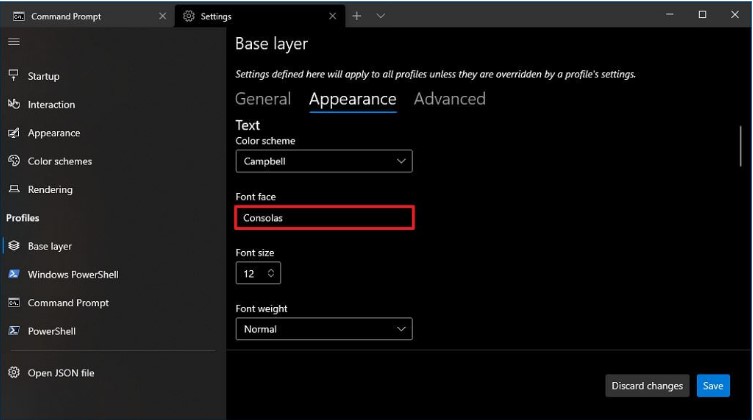

Configure default specific profile font face Once you complete the steps, the new font style will apply immediately to every profile configured on the Windows Terminal. Windows Terminal also supports Acrylic effects, and you can use this either on its own or in conjunction with your background image like this: 'useAcrylic' : true,'acrylicOpacity' : 0.Under the “Text” section, use the “Font face” setting and type the name of the style – for example, Consolas.Ĭlick the Save button in the bottom-right corner. This then tones down the background image and you're left with something less distracting that doesn't overpower the text.


We can do that by adding an opacity value such as this: 'backgroundImageOpacity' : 0.2, The fun doesn't stop there, though, and if you're using a full background image you probably want to tone it down a little. Save the file and your background image should now be attached to your shell. This example from Microsoft shows you the template to follow to create the theme in the image above: , Source: Microsoft (Image credit: Source: Microsoft) Microsoft has a great resource (opens in new tab) with some examples to help you get started.Įssentially, you add your own scheme with the hex string for the colors you want into the schemes section, then use this as you would in the first section to add the theme to your shells. If you're feeling particularly creative you can build your own. The built-in themes aren't the only ones you can use in Windows Terminal. How to add custom themes to Windows Terminal Once you've added the theme, simply save the file and Windows Terminal will update before your eyes. Note, too, that if your theme is not the final line you must remember to add a comma at the end of its line. So, for example, to amend PowerShell 7 to have a One Half Dark theme, your settings would look something like this: 'hidden': false,'colorScheme': 'One Half Dark','name': 'PowerShell','source': '' In Windows Terminal as standard you can choose any of the following themes: It will follow this template: 'colorScheme': 'Your Chosen Color Scheme' The settings.json file will open up in your default text editor.įrom here on out you need to add the theme information to whichever shell you want to change.


 0 kommentar(er)
0 kommentar(er)
